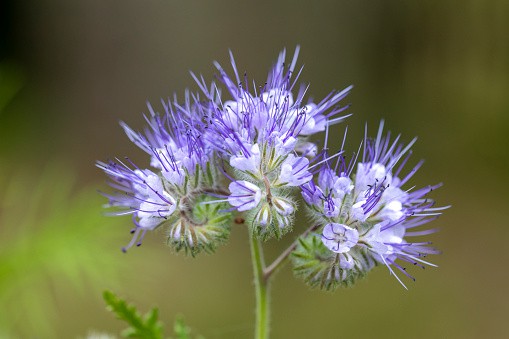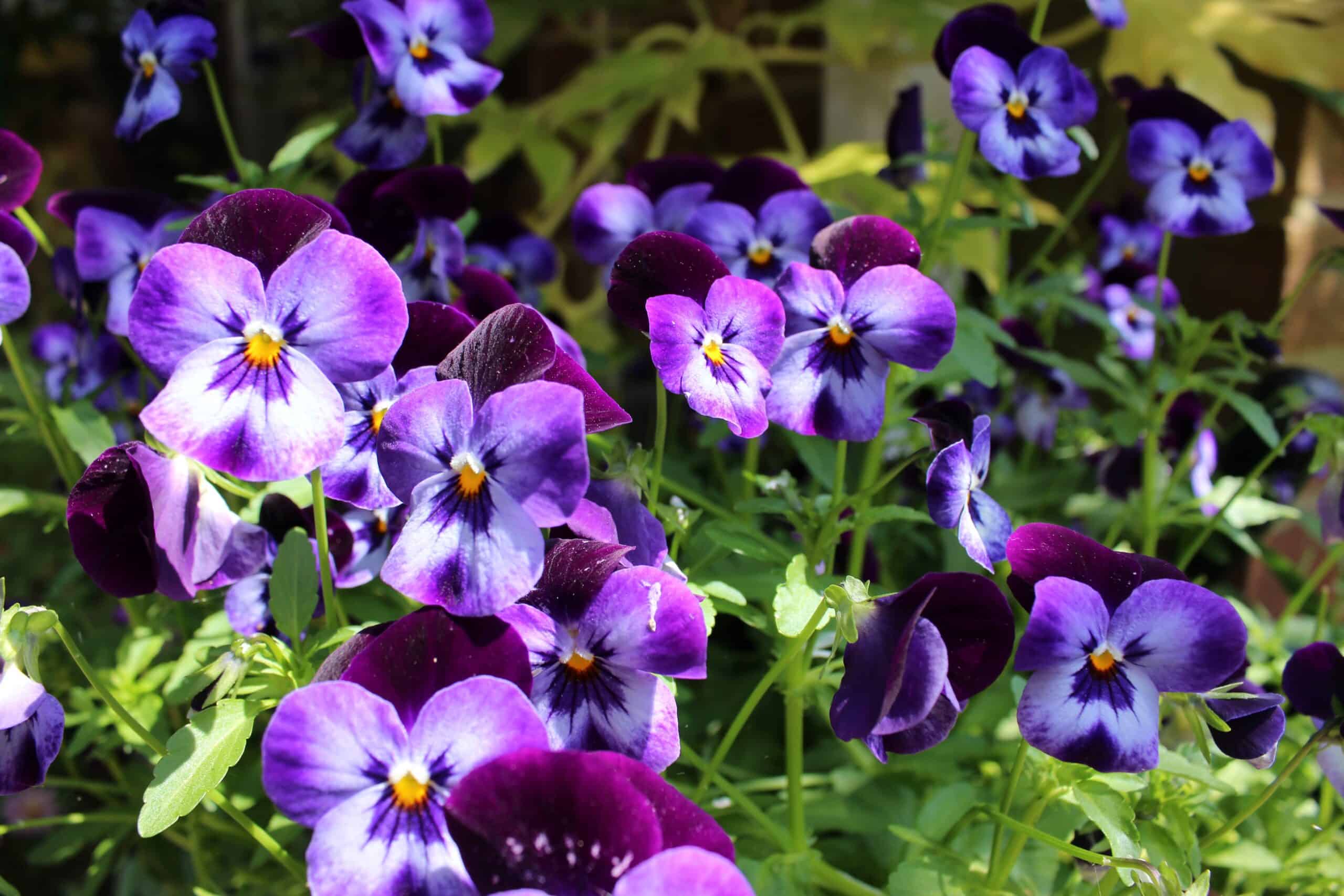Fiddleneck, also known as Scorpion Weed, is a Mediterranean native annual with an explosive appearance that has become an essential plant for bees and a beautiful addition to gardens. The plant has received scientific recognition as ‘Phacelia Tanacetifolia’, belonging to the Hydrophyllaceae family. The genus-name Phacelia derives from the Latin word “Phacēlía”, referring to the compound heads of the plants’ flowers, resembling an open sea-horse; the species name tanacetifolia refers to its leaves, which are similar to leaves from the Tanacetum genus. Also known as ‘Wild Balsam’, it is a Mediterranean native plant that loves mild climates and warm temperate areas.
How to Plant and Grow Fiddleneck
Fiddleneck’s needs are simple, as the plant thrives in fertile, free-draining soil. Sun exposure is best in full sun, though it will prosper in partial shade. Non-fertilized soil with a pH of 5.5-7.2 is the best choice for planting and growing Fiddleneck. It requires moderate water and humid climate, but once established it prefers dry conditions. The plant will thrive in temperatures between 55-65°F (12-18°C).
Fiddleneck can be easily cultivated from seed but it is important to plant them in the late spring or early summer. It is also suggested to pinch off the spent blooms to boost blooming again, especially during hot days.
Meaning and Symbolism
Fiddleneck, a wildflower known for its beauty, has been popularly used in traditional medicine as it has multiple usages and applications. Given the meanings of its Latin names, its symbolism relates mainly to patience, resilience and magnificence. It can also be associated with persistent determination and great adaptability in the face of unfavorable living conditions.
History, Mythology and Religious Significance
Fiddleneck is not only known for its beautiful appearance, but also for its interesting history. The plant has always held a strong connection with indigenous cultures such as the Navajo and Hopi, who have long used Fiddleneck for medicinal purposes. In the Southern Americas, it is known as a sacred flower linked with mythology, and throughout North America, it was considered an important healing plant. In Ayurveda, Fiddleneck is a medicinal herb known for treating asthma and pulmonary ailments. It is also considered to have many spiritual benefits.
Flower Varieties and their Defining Characteristics
Fiddleneck has many different varieties, providing an array of colors and sizes to choose from. ‘Blue Bright Eyes’ is a notable hybrid of Fiddleneck known for its bright blue blooms and tall height, while also having an impressive bloom period of up to six months. ‘Plum Perfect’, a low-growing form of Fiddleneck, is also popular among gardeners. It is known for its more compact size and has rose-purple flowers with dark centers when mature. ‘Baby Blue Eyes’ and ‘Purple Dome’ varieties, both low maintenance and petite forms, are also known for the perfect addition to perennial gardens and borders.
How to Pot and Repot
While Fiddleneck is a great plant for beginners, pots and containers can help protect them from extreme weather and ultimately contribute to their wellbeing. In general, clay or terra cotta pots are the best choice, however plastic and ceramic containers can work well too. The key is to provide good soil drainage, and it’s ideal to start with a pot that is one size larger than the current one. When planting in the pot, the seed mix should be about ¾ of the pot, providing enough space for growth.
How to Prune
Pruning is a fundamental step in the growth and development of any plant. Pruning Fiddleneck done correctly and at the right time can actually keep this low-maintenance and drought-tolerant plant looking great. As a general rule, pruning can be beneficial in all circumstances, as it helps in controlling the spread of the plant, increasing air circulation and removing the old and dead parts. When it comes to Fiddleneck, pruning should take place at the end of its flowering season, either in the late fall or early spring. The pruning should remove all the old flowers, and any dead or diseased branches and leaves.
How to Propagate
Fiddleneck is relatively easy to propagate from seed, though some gardeners prefer dividing established plants in the spring. To propagate from seeds, it is important to mix the Fiddleneck seeds in a potting mix and then thin out the extra seedlings. When dividing plants, the root clumps should be separated into individual cuttings and re-planted into the new location.
Common Pests and Diseases
Fiddleneck’s low maintenance characteristics do not make it immune to plant pests and diseases. One of the most common issues affecting the plant is powdery mildew that affects the leaves, resulting in discoloration. Aphids and spider mites can also affect the plant, though the damage is usually minimal. An effective way to prevent these sorts of pests and diseases is to ensure the plants are receiving good air circulation and water.
Frequently Asked Questions
Q: What is the family name of Fiddleneck?
A: Fiddleneck belongs to the Hydrophyllaceae family.
Q: Is Fiddleneck a perennial, a biennial or an annual plant?
A: Fiddleneck is an annual plant.
Q: Does Fiddleneck need to be deadheaded?
A: Yes, Fiddleneck should be deadheaded as this will promote more blooms throughout the season.
A Table Fact Sheet
| Fiddleneck | Phacelia Tanacetifolia |
| Family | Hydrophyllaceae |
| Plant Type | Annual |
| Mature Size | 6–24 inches |
| Sun Exposure | Full Sun/Partial Shade |
| Soil Type | Fertile, well-drained |
| Soil pH | 5.5–7.2 |
| Bloom Time | Late Spring – Early Summer |
| Flower Color | Blue – Lavender |
| Hardiness Zones | 5–9 |
| Native Area | Southwestern US & Northwestern Mexico |
| Uses | Gardens, Medicinal Purposes |
Fiddleneck, with its unique and striking beauty, is an easy-to-cultivate plant that brings a touch of color and life to any garden. With its colorful blooms that last for months, this low-maintenance annual is one of the best plants for adding a splash of beauty to your potting or garden. Not only is Fiddleneck a decorative flower, it has also held significance in many cultures throughout history and mythology. With its deep meanings and versatile uses, this incredible flower is more than just a pretty face – it is a perfect addition to any garden.
What we love from Amazon this week
Buy these wonderful flowers directly from Amazon:















